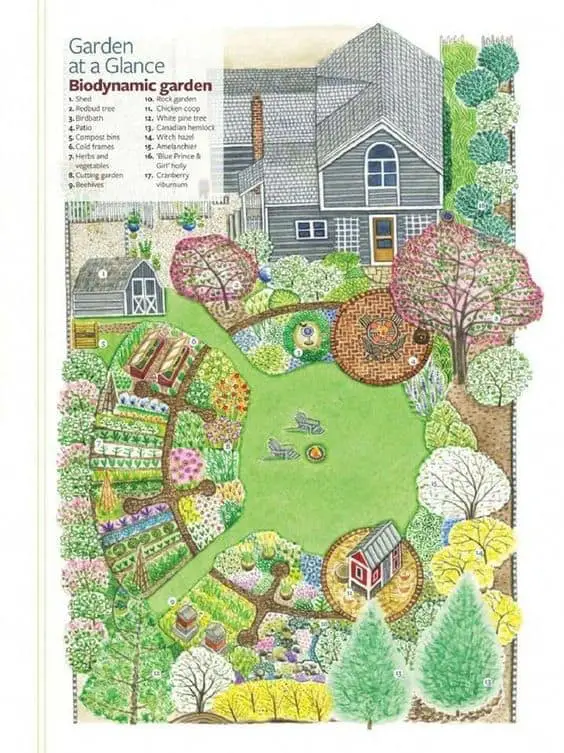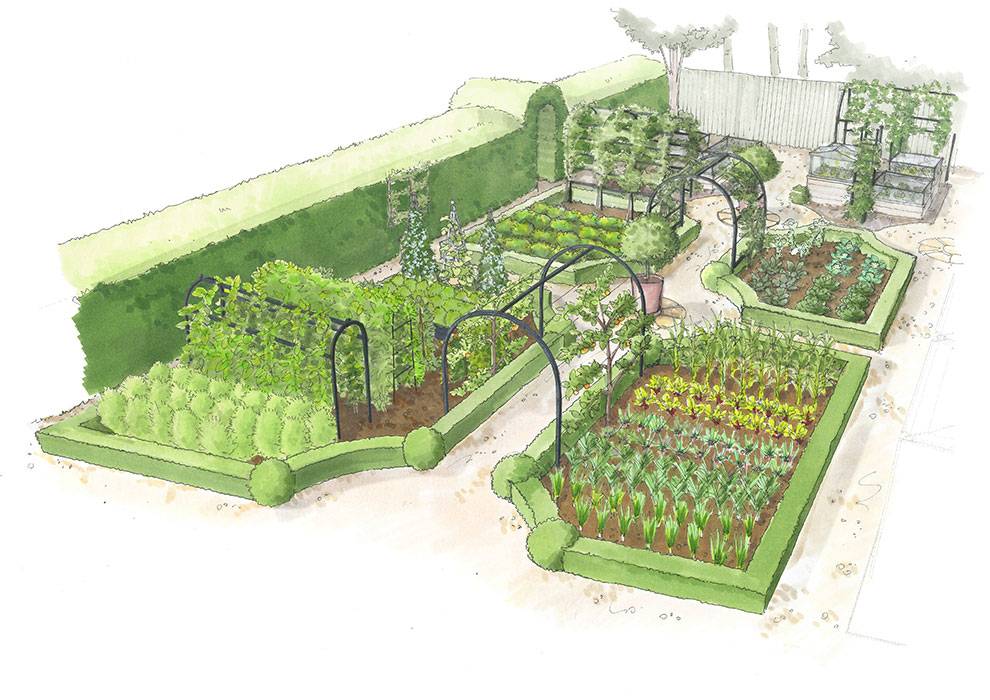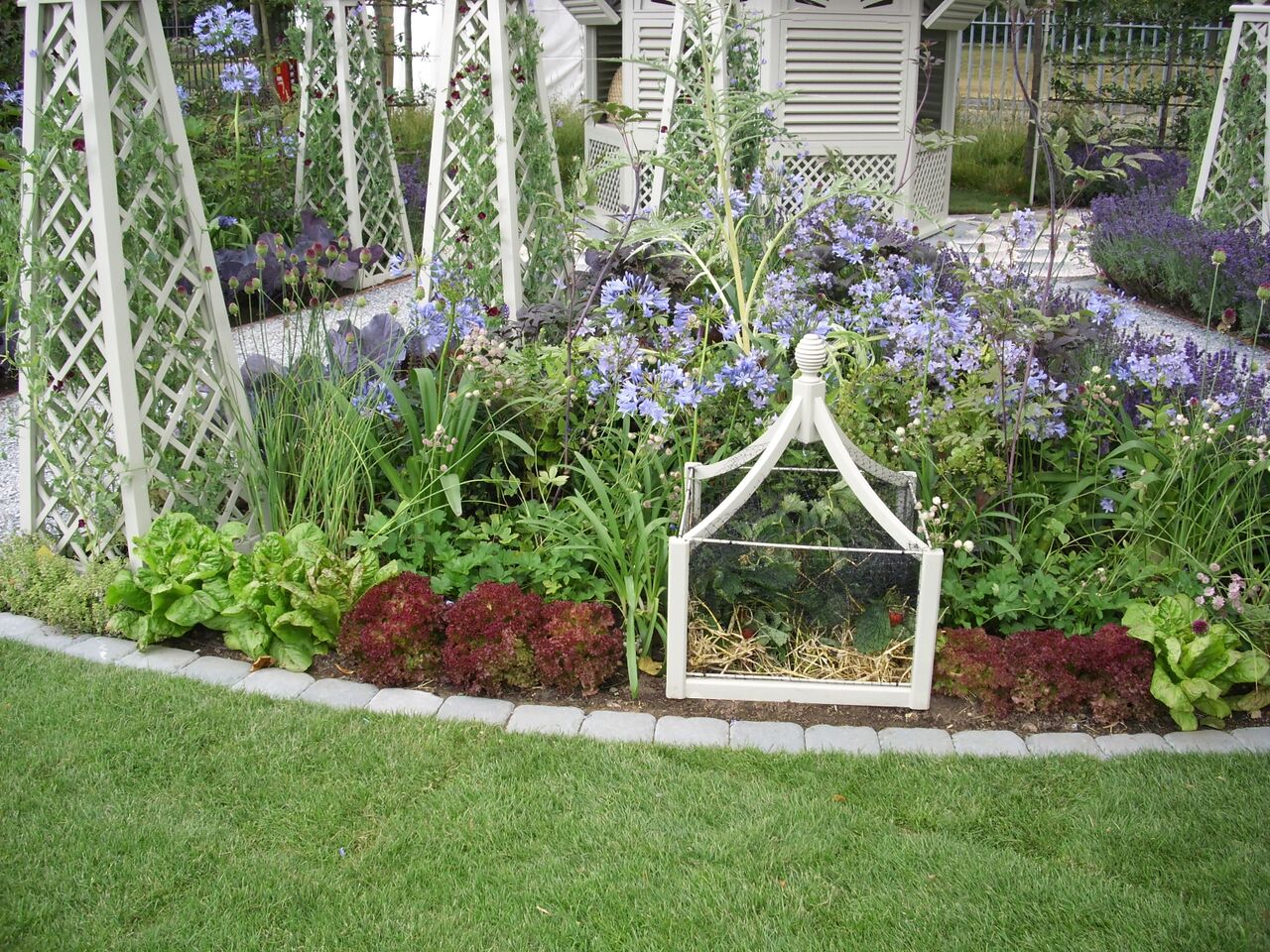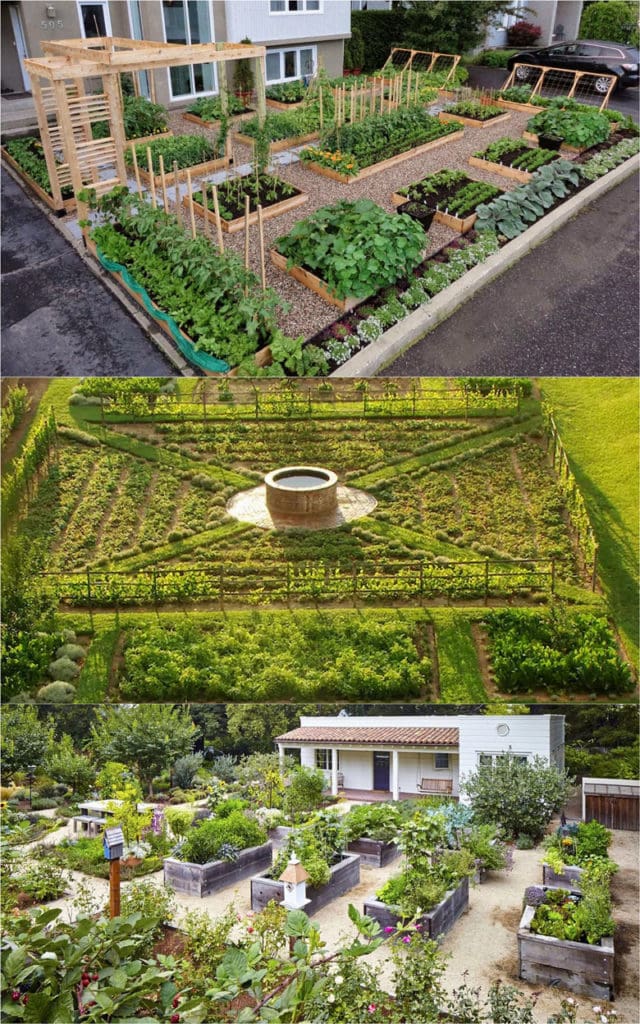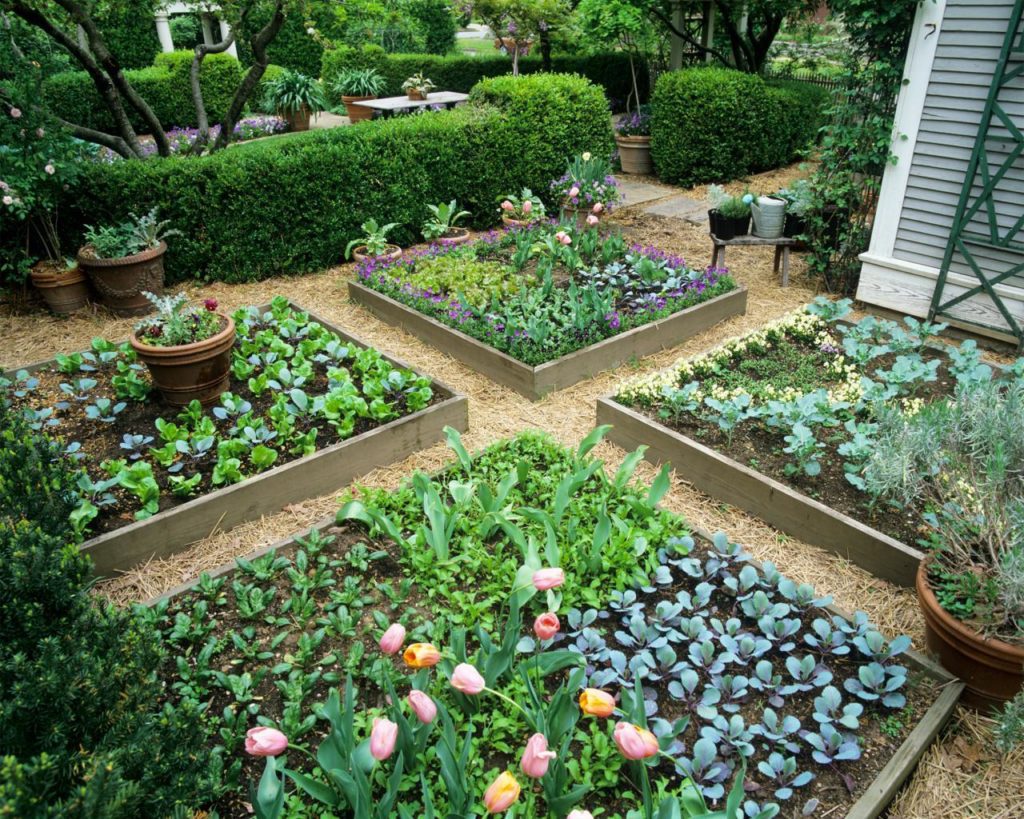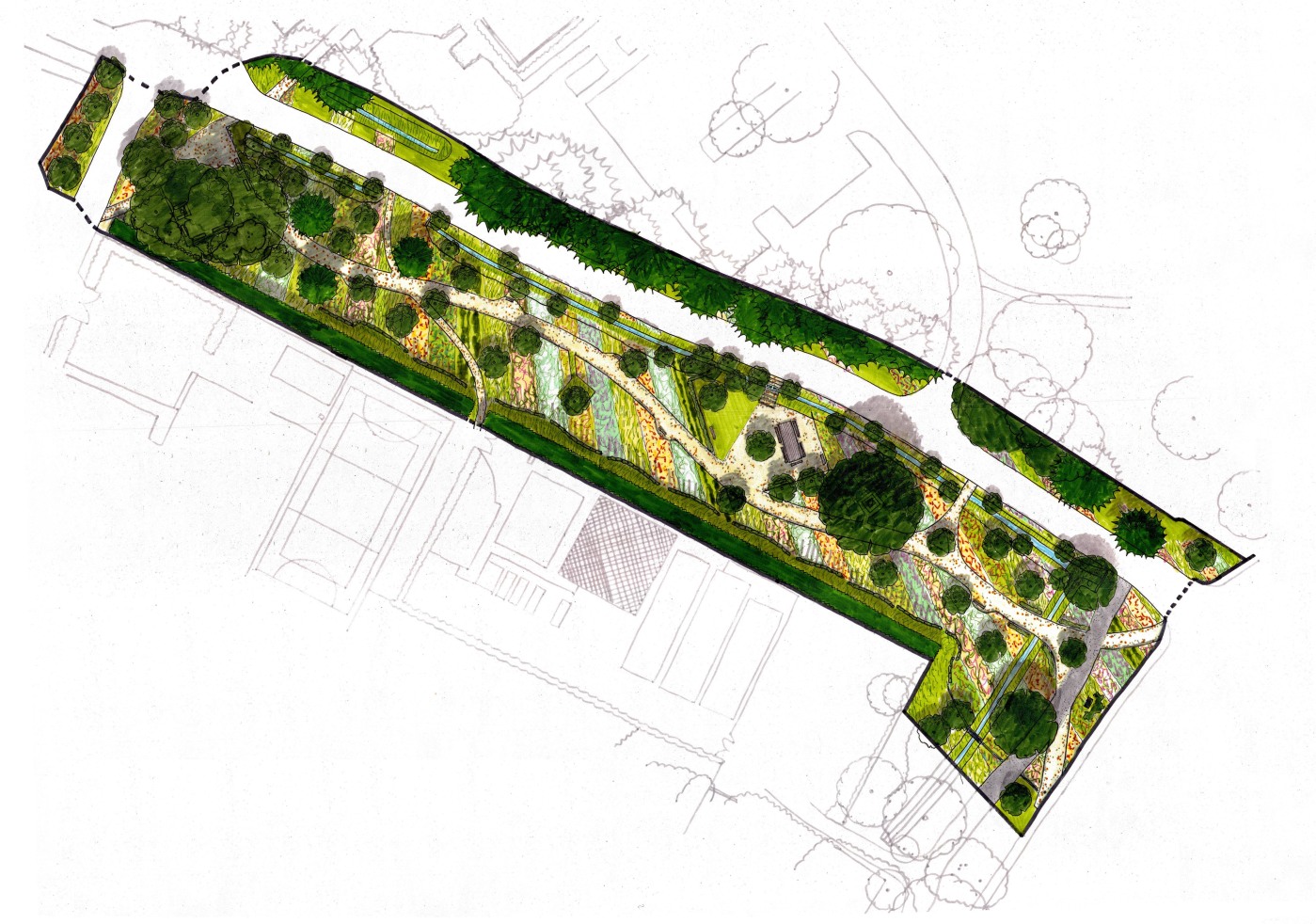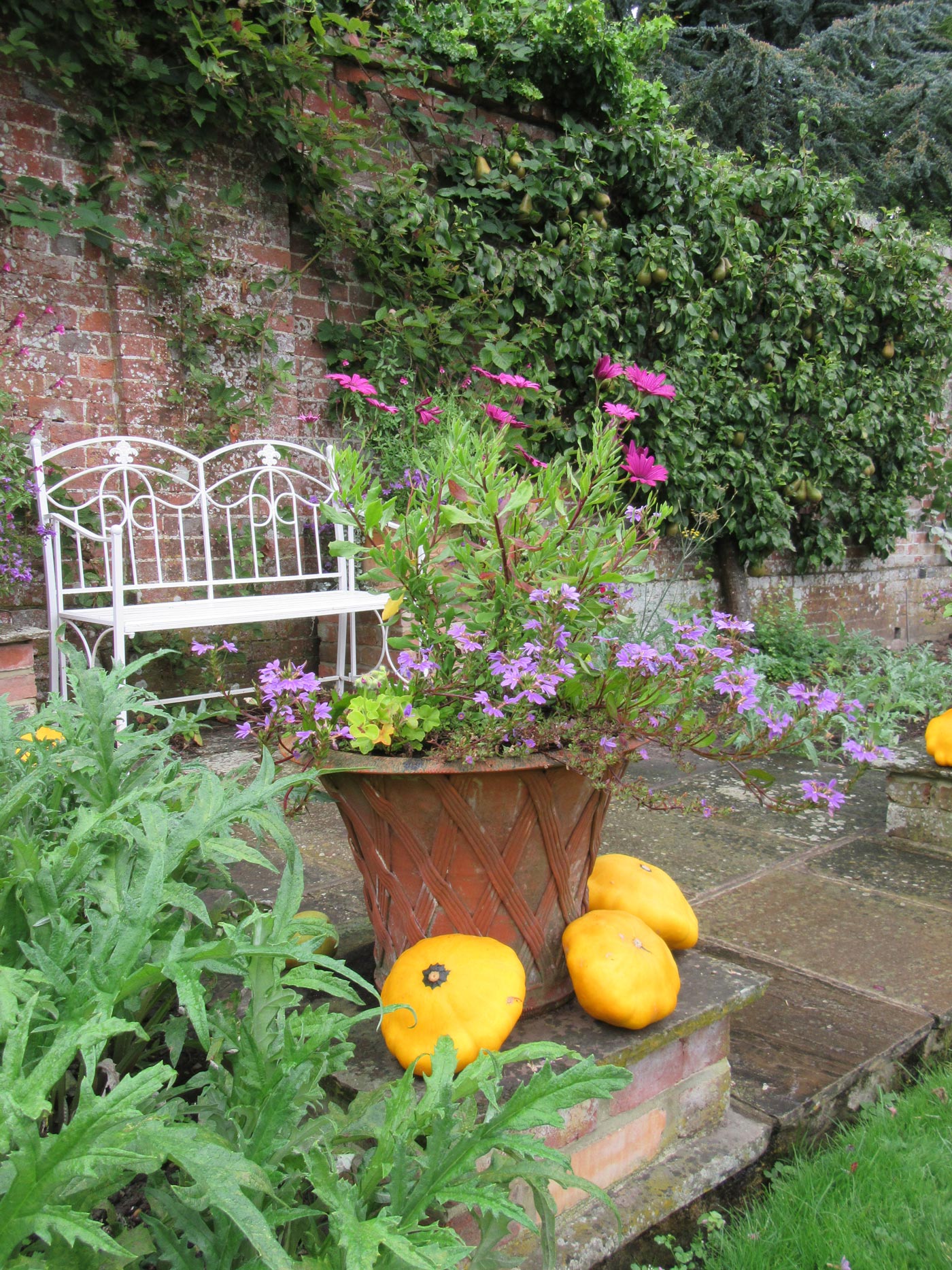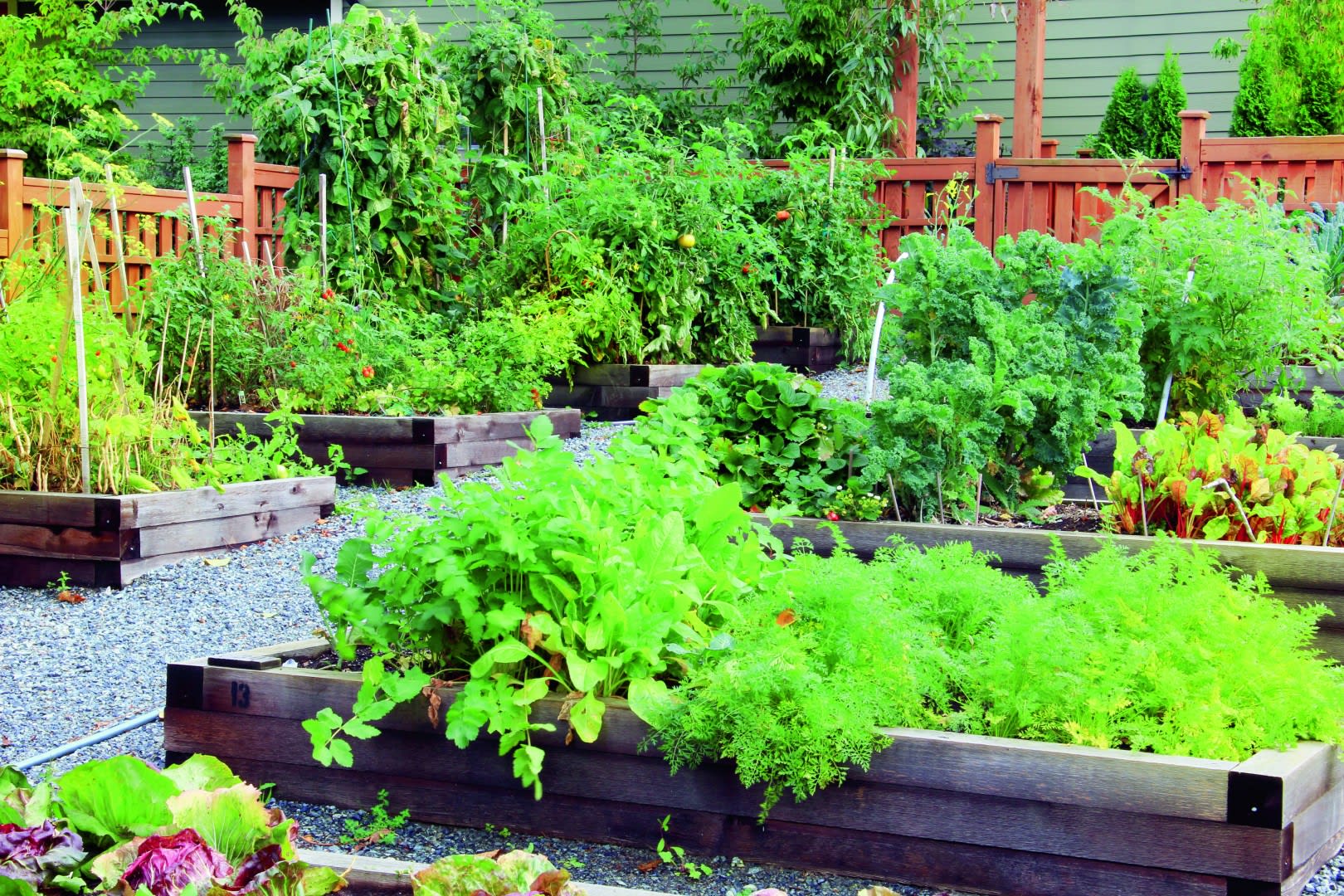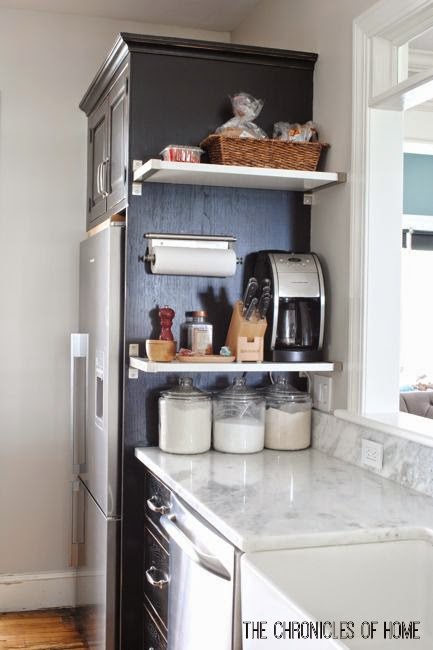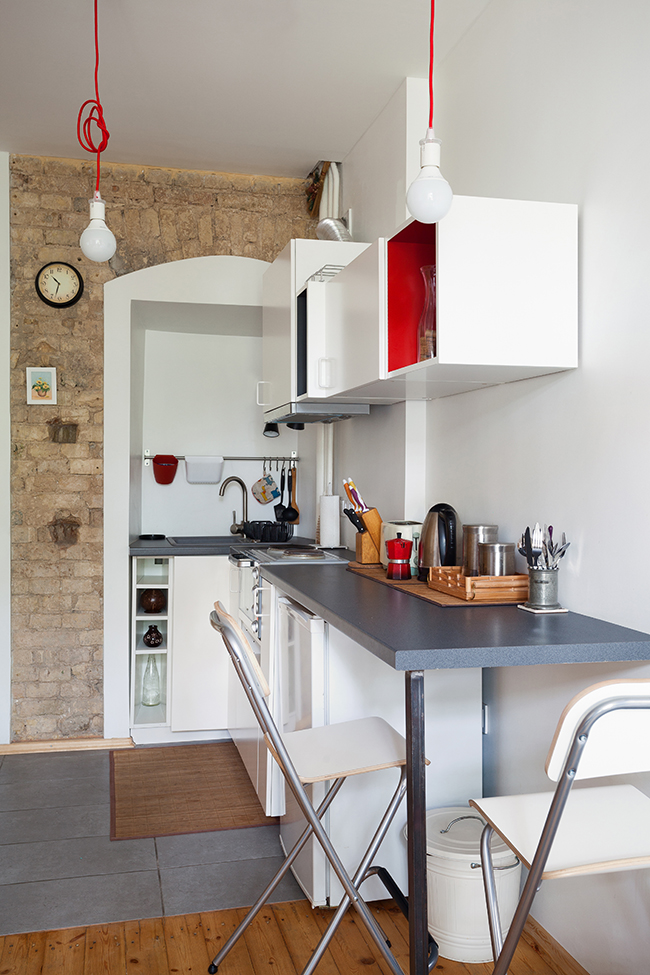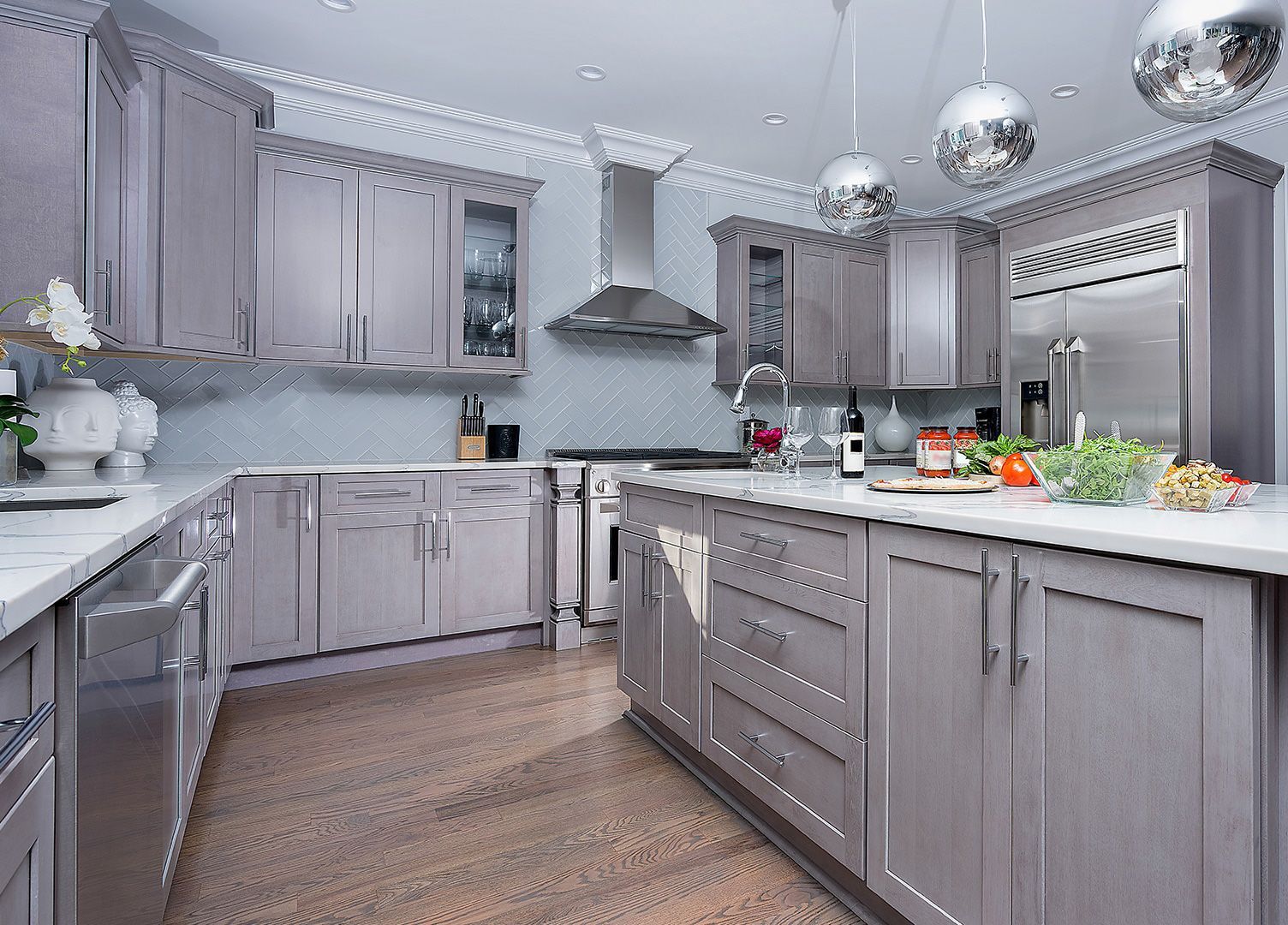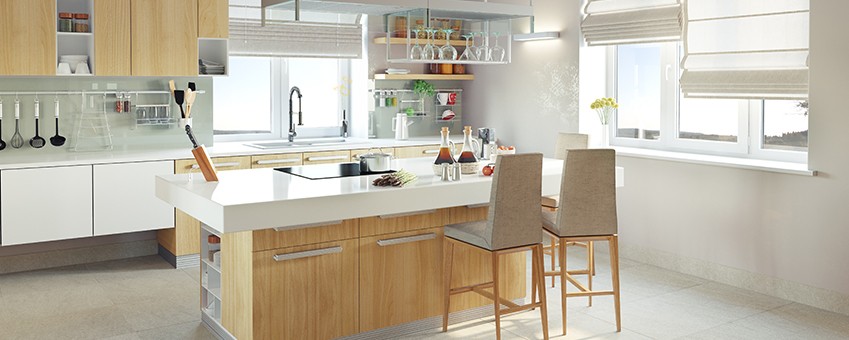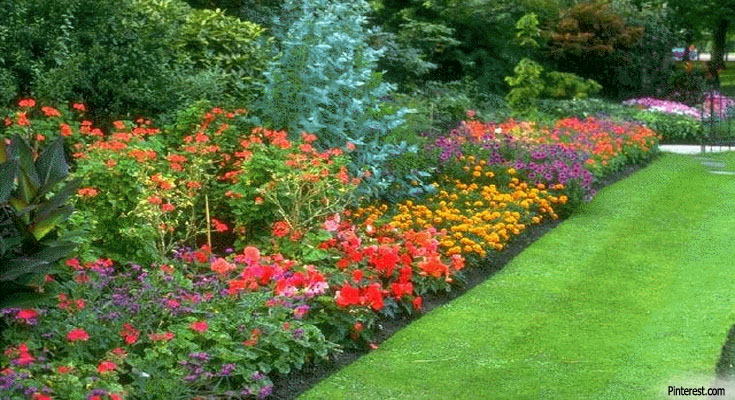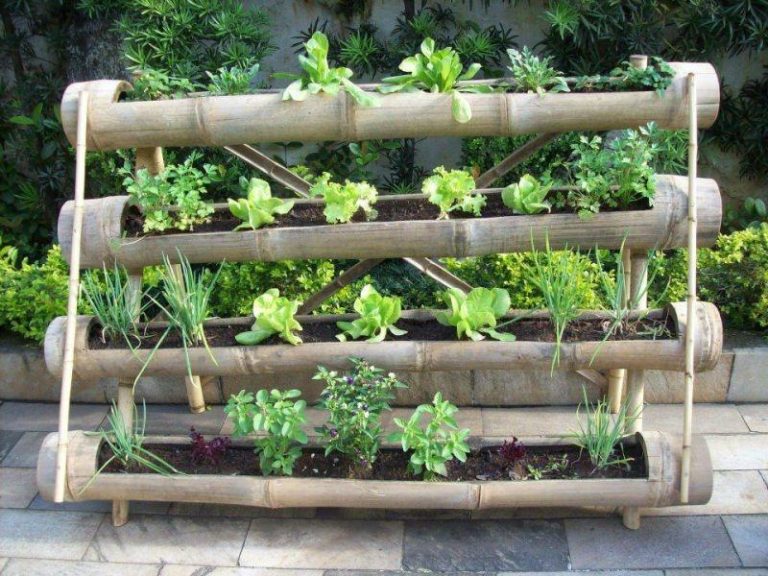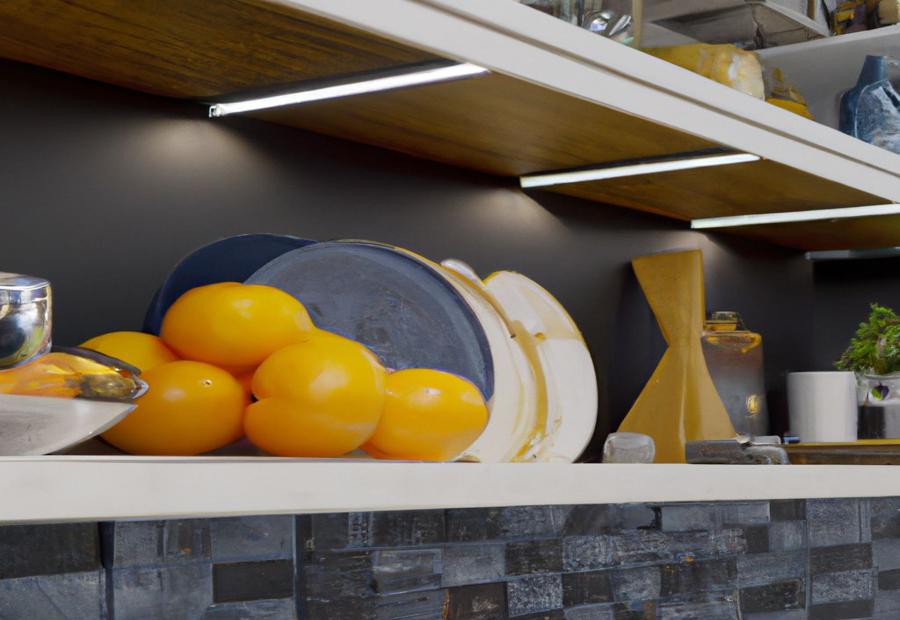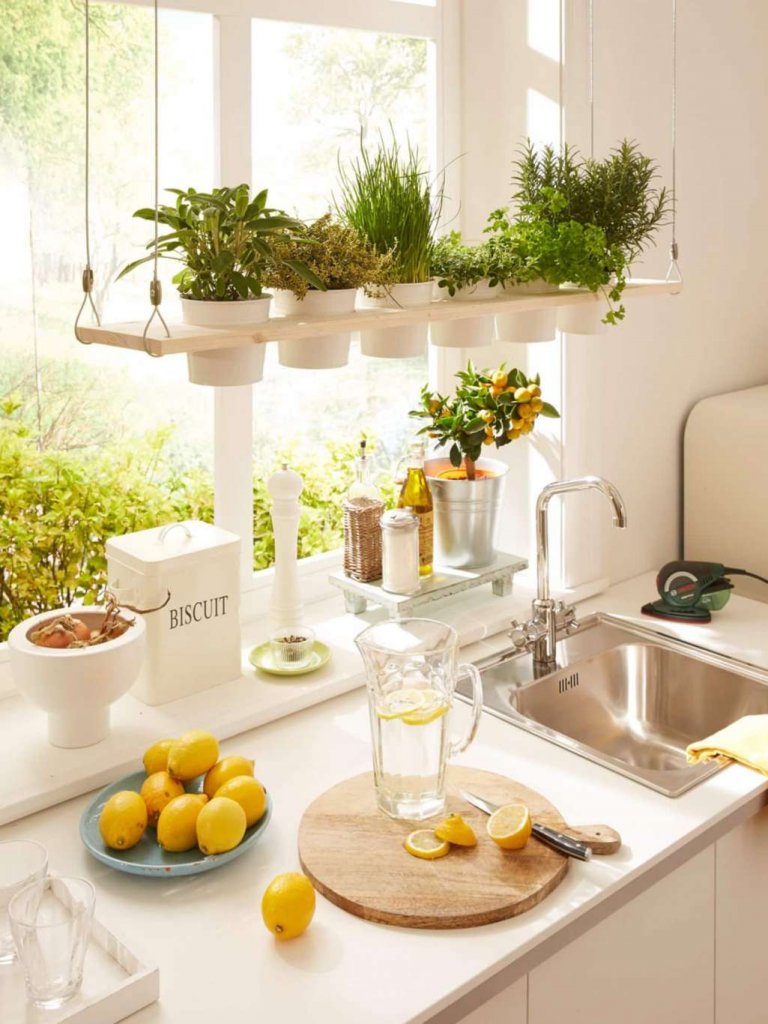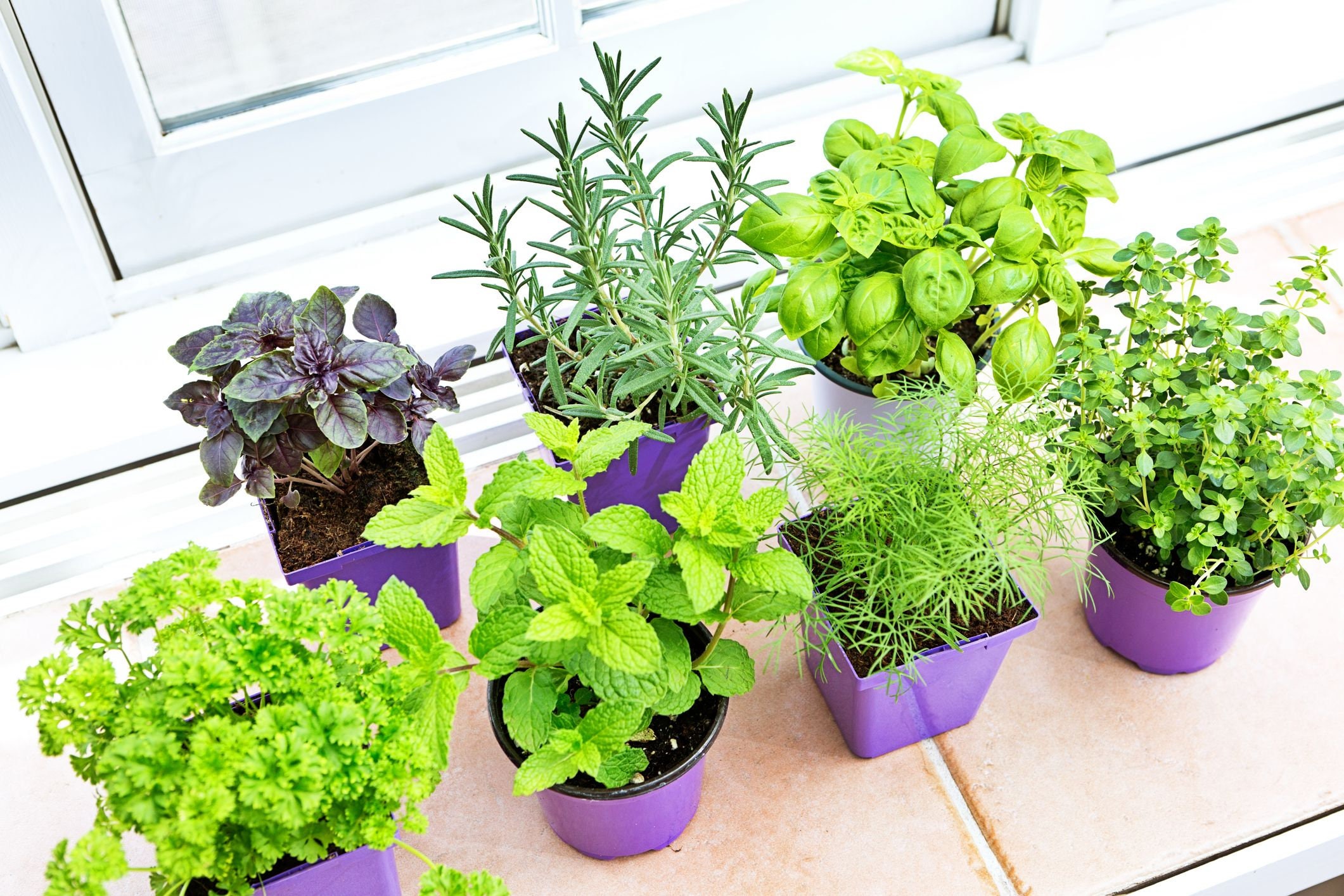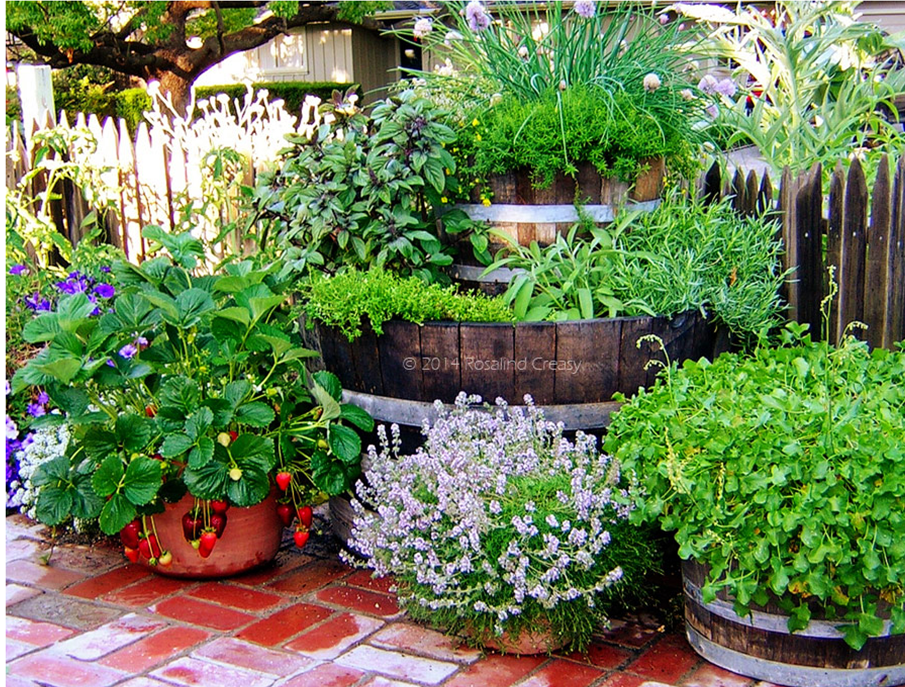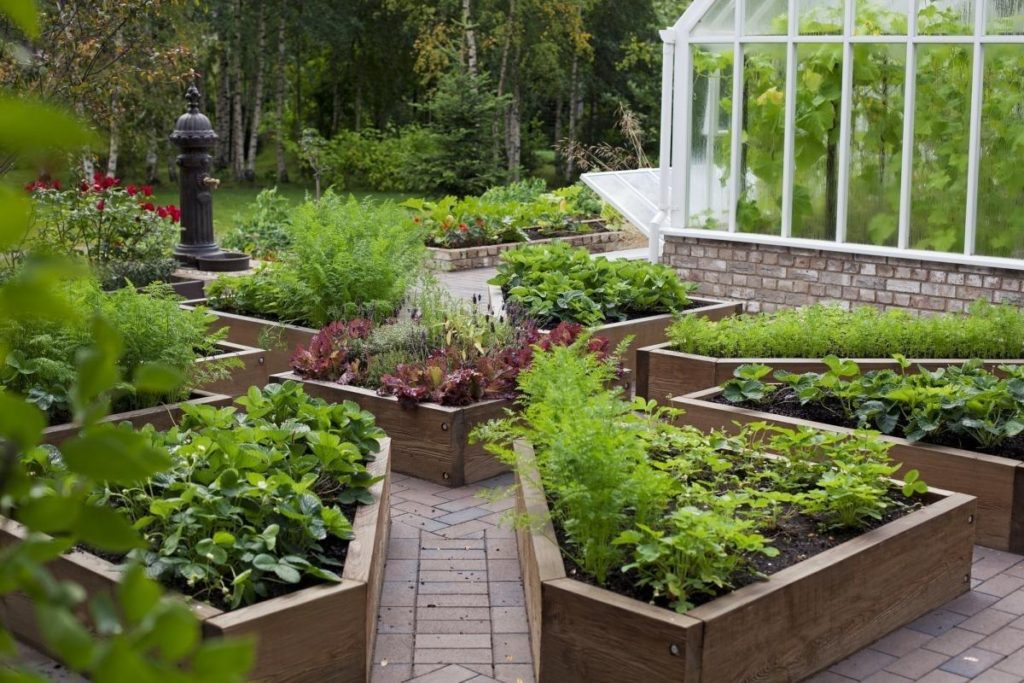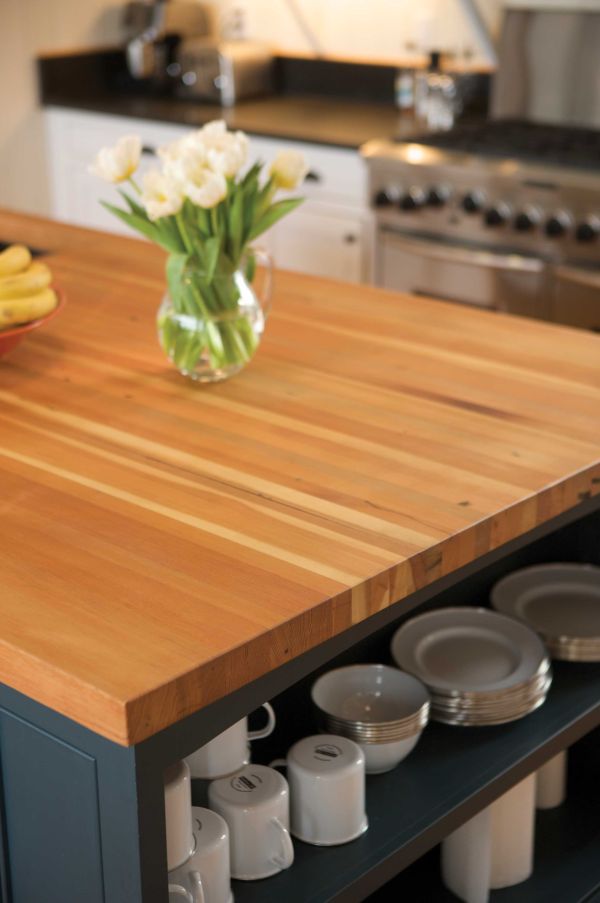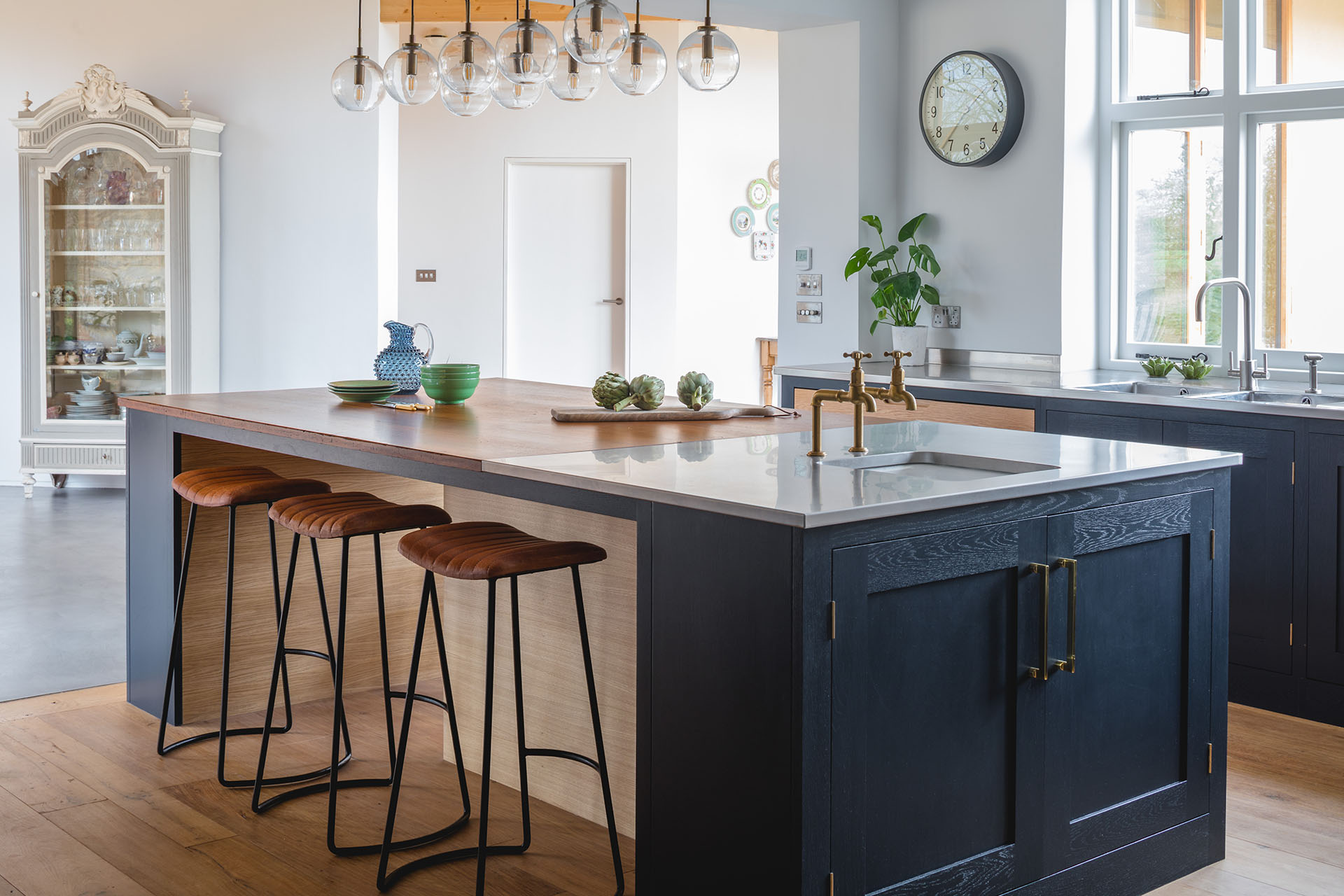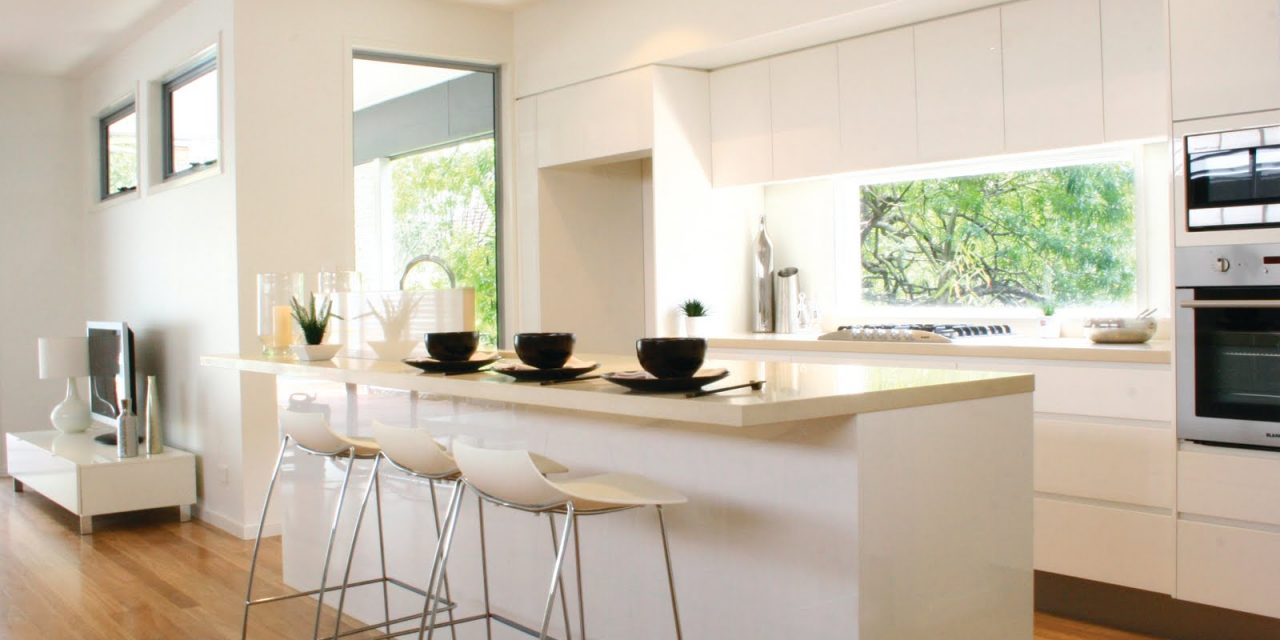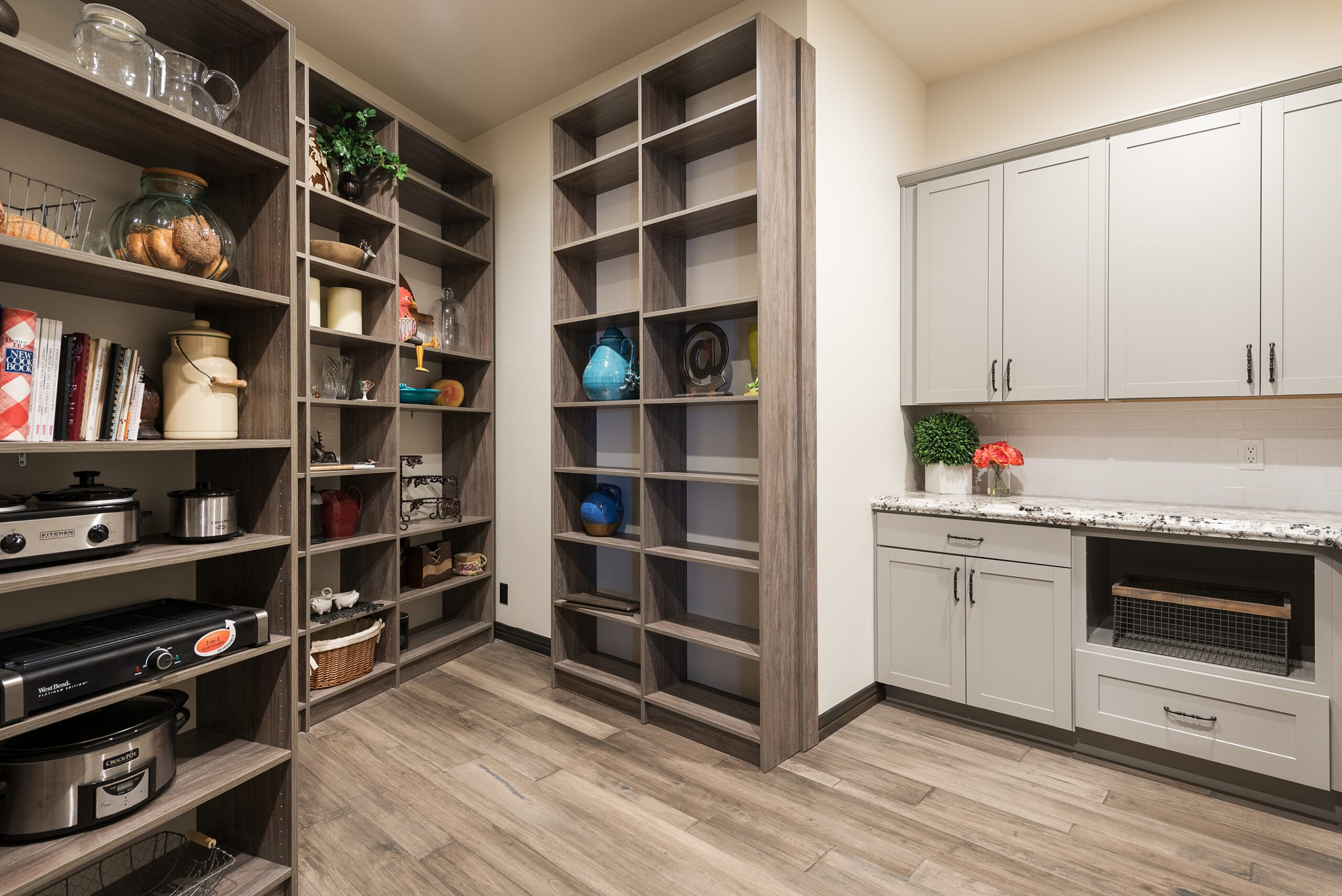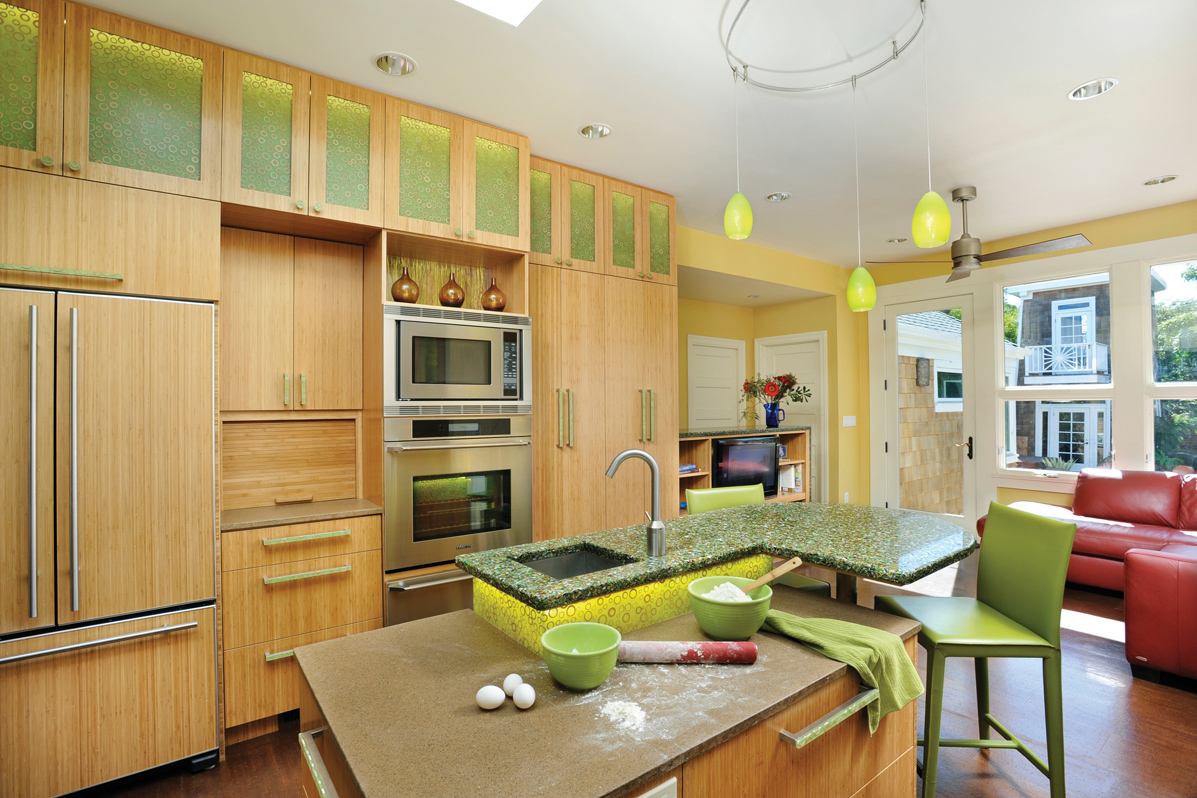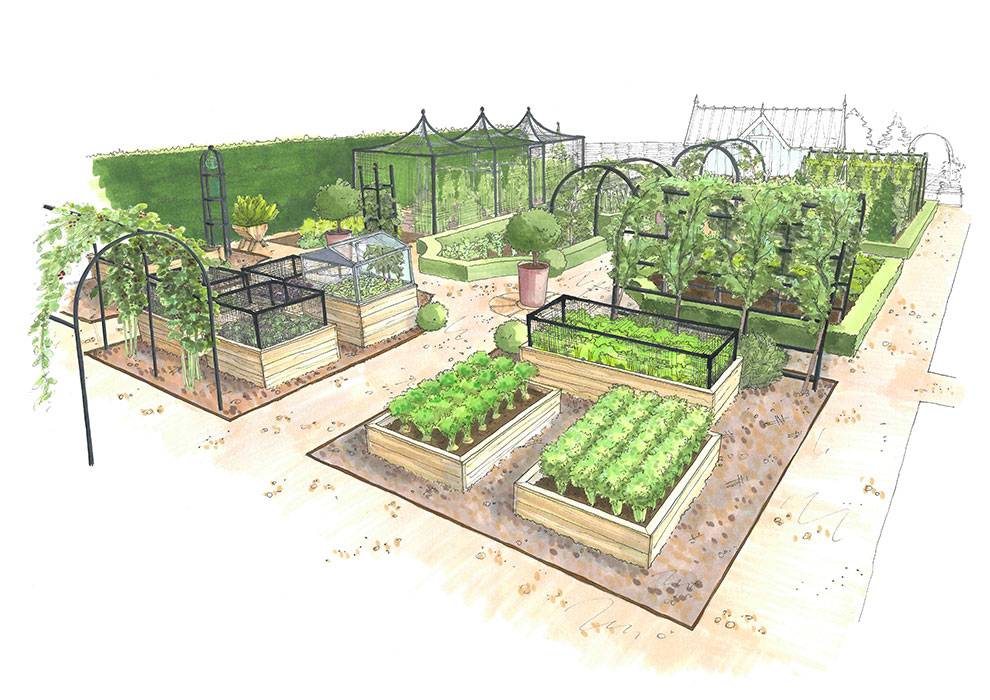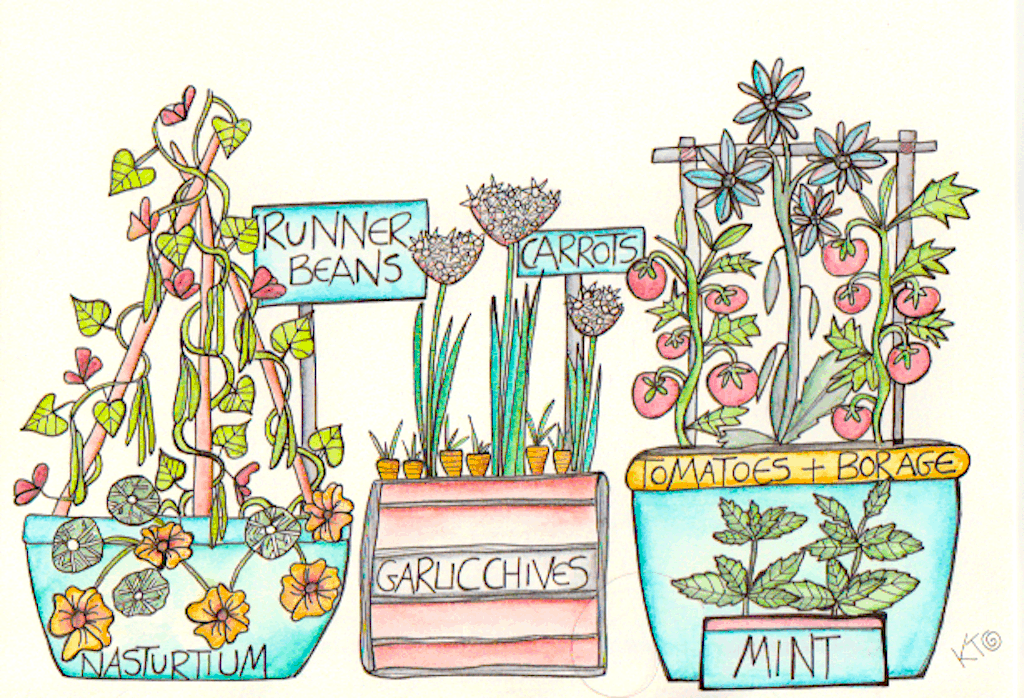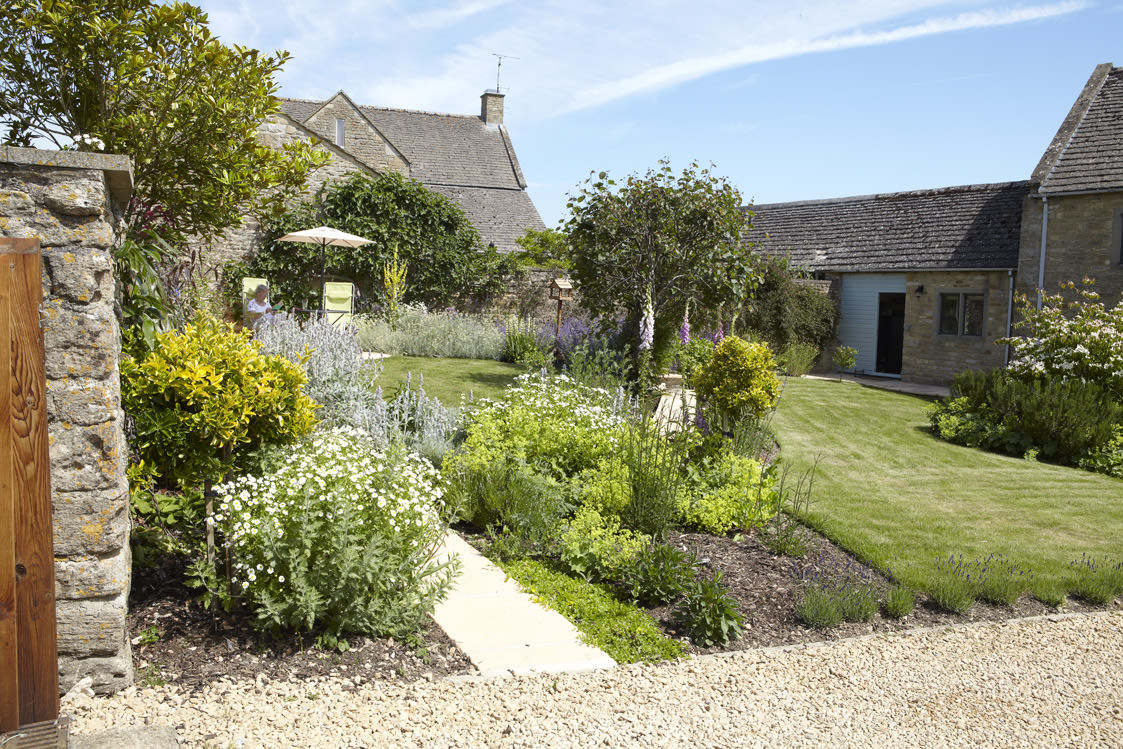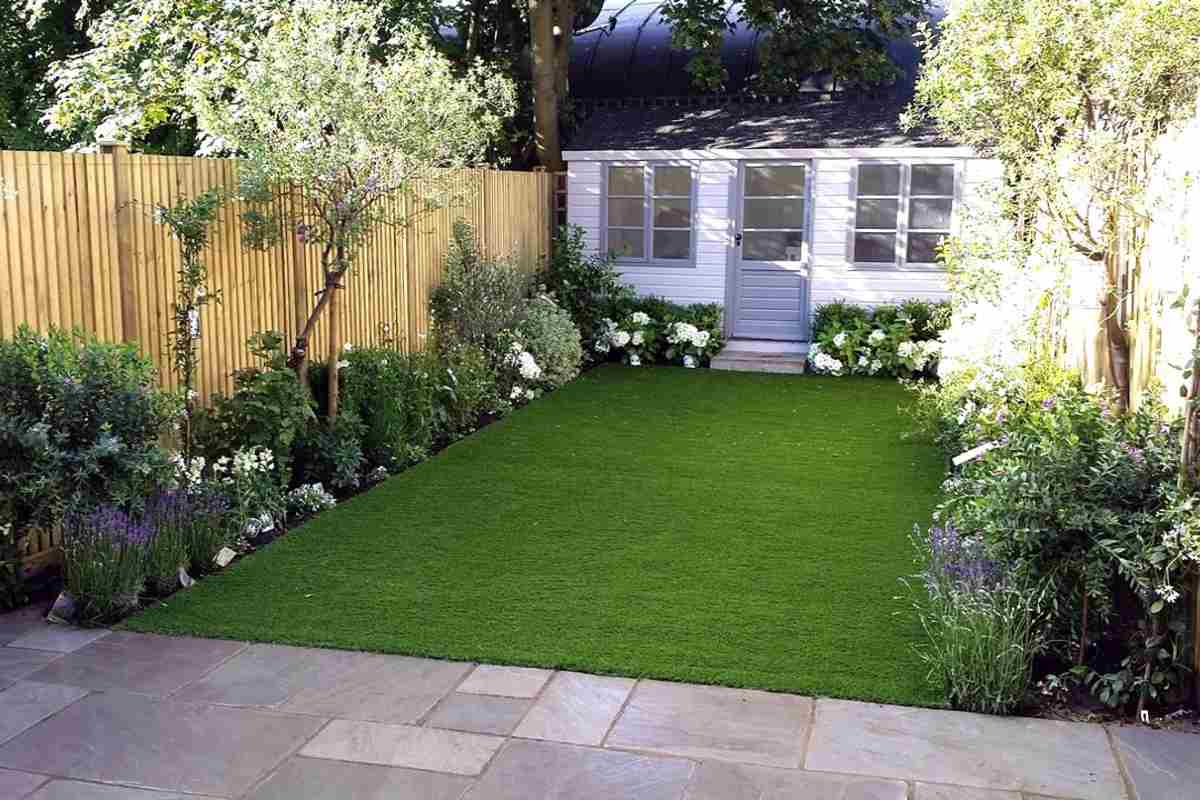Designing a kitchen garden can be a fulfilling and rewarding experience. Not only does it provide fresh and organic produce for your family, but it also adds beauty and character to your home. However, before you start digging and planting, it's important to have a plan in place. Planning is the key to a successful kitchen garden, and it involves considering factors such as space, sunlight, and the types of plants you want to grow. By planning ahead, you can create a functional and productive kitchen garden that meets your needs and fits your space perfectly.Planning a Kitchen Garden
A productive kitchen garden is one that yields a bountiful harvest throughout the growing season. To achieve this, it's important to consider the layout and placement of your plants. Grouping plants with similar needs together, such as those that require full sun or partial shade, can help maximize their growth and productivity. Additionally, rotating crops each season can help prevent soil depletion and pest infestations, leading to a healthier and more productive garden.Designing a Productive Kitchen Garden
A functional kitchen garden is one that not only produces great-tasting food but also makes your gardening experience easier and more enjoyable. When designing your garden, consider incorporating features such as raised beds, paths, and irrigation systems to make planting, tending, and harvesting more convenient. You can also add functional elements like trellises and supports for climbing plants, and seating areas to relax and enjoy your garden.Creating a Functional Kitchen Garden
Space is often a limiting factor when it comes to designing a kitchen garden, especially for those with smaller yards. However, with some creativity and planning, you can maximize the space you have and still have a productive garden. Utilizing vertical space by growing plants on trellises or using hanging baskets can help you grow more in a smaller area. You can also use techniques like intercropping, where two or more crops are planted in the same area, to make the most out of limited space.Maximizing Space in a Kitchen Garden
Choosing the right plants for your kitchen garden is essential for its success. Consider the types of plants that thrive in your climate and the amount of sunlight your garden receives. You should also think about the types of produce you and your family enjoy eating and select plants accordingly. Additionally, it's important to choose disease-resistant and low-maintenance varieties to make caring for your garden easier.Choosing the Right Plants for a Kitchen Garden
As mentioned earlier, utilizing vertical space is a great way to maximize the space in a kitchen garden. Some plants, such as tomatoes, cucumbers, and beans, naturally grow vertically and can be trained to grow on trellises or supports. You can also use hanging baskets to grow herbs or small fruits like strawberries. Utilizing vertical space not only saves space but also adds visual interest to your garden.Utilizing Vertical Space in a Kitchen Garden
No kitchen garden is complete without herbs. Not only do they add flavor to your dishes, but they also have medicinal and aromatic properties. When designing your kitchen garden, consider incorporating herbs into your layout. You can plant them in dedicated herb beds or interplant them with your vegetables to add color and attract pollinators. You can also use herbs as natural pest repellents, making them a valuable addition to any garden.Incorporating Herbs into a Kitchen Garden Design
In today's world, sustainability is becoming more important, and your kitchen garden is no exception. Designing a sustainable kitchen garden involves using organic and natural gardening practices, such as composting and crop rotation, to promote healthy soil and minimize the use of chemicals. You can also incorporate water-saving techniques, such as drip irrigation, to conserve water. By designing a sustainable kitchen garden, you not only take care of the environment but also produce healthier and more nutritious food for your family.Designing a Sustainable Kitchen Garden
A kitchen garden doesn't have to be purely functional; it can also be aesthetically pleasing. When designing your garden layout, consider incorporating elements like flowers, ornamental plants, and decorative structures to add beauty and charm to your garden. You can also use different colors and textures to create an eye-catching and visually appealing design. A beautiful kitchen garden will not only provide you with fresh produce but also become a relaxing and peaceful space in your home.Creating a Beautiful Kitchen Garden Layout
While gardening can be a rewarding activity, it can also be time-consuming and require a lot of effort. If you have a busy lifestyle or simply want to minimize the amount of work needed to maintain your kitchen garden, then designing a low-maintenance garden is the way to go. This can involve using techniques like mulching, which helps retain moisture and suppress weeds, and selecting low-maintenance plants that require less care. With a well-designed low-maintenance kitchen garden, you can enjoy fresh produce without having to spend hours tending to it.Designing a Low-Maintenance Kitchen Garden
The Importance of Incorporating Sustainable Practices in Your Kitchen Garden Design
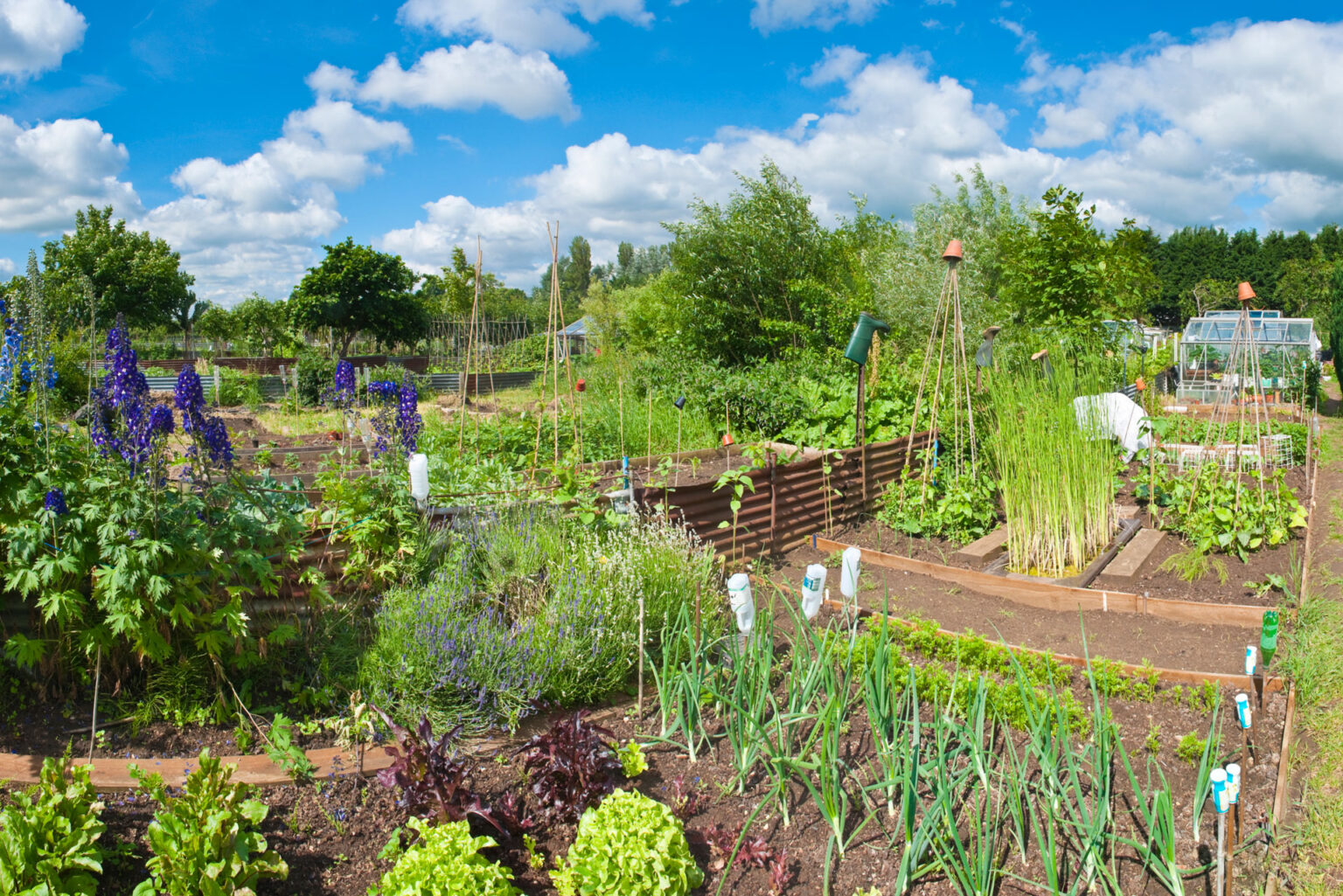
Sustainability: A Growing Trend in Kitchen Garden Design
 As more people become aware of the impact of their daily choices on the environment, sustainable living has become a growing trend in various aspects of our lives, including home design. This trend has extended to kitchen gardens, where homeowners are now looking for ways to incorporate eco-friendly practices into their garden design. With the right approach and a few key considerations, you can create a kitchen garden that not only provides fresh produce, but also contributes to a healthier and more sustainable lifestyle.
Sustainable Materials and Techniques
One of the first things to consider when designing a kitchen garden is the use of sustainable materials and techniques. This includes using organic and non-toxic materials for your garden beds, such as untreated wood or recycled materials. You can also opt for water-saving techniques, such as drip irrigation and rainwater harvesting, to minimize your water usage and reduce your carbon footprint.
As more people become aware of the impact of their daily choices on the environment, sustainable living has become a growing trend in various aspects of our lives, including home design. This trend has extended to kitchen gardens, where homeowners are now looking for ways to incorporate eco-friendly practices into their garden design. With the right approach and a few key considerations, you can create a kitchen garden that not only provides fresh produce, but also contributes to a healthier and more sustainable lifestyle.
Sustainable Materials and Techniques
One of the first things to consider when designing a kitchen garden is the use of sustainable materials and techniques. This includes using organic and non-toxic materials for your garden beds, such as untreated wood or recycled materials. You can also opt for water-saving techniques, such as drip irrigation and rainwater harvesting, to minimize your water usage and reduce your carbon footprint.
Maximizing Space and Diversity
:max_bytes(150000):strip_icc()/small-garden-944311284-61ce49cc8f1d4bfa8d71bb47d5e29bd6.jpg) Incorporating sustainable practices also means making the most out of the space you have and maximizing diversity in your garden. This can be achieved through techniques such as companion planting, where certain plants are grown together to benefit each other, or vertical gardening, which utilizes wall space to grow plants and save ground space. By incorporating a variety of plants in your garden, you can also help support the local ecosystem and attract beneficial pollinators.
Composting and Recycling
Another important aspect of sustainable kitchen garden design is the use of composting and recycling. Composting not only helps reduce waste but also provides essential nutrients for your plants. You can also recycle materials such as food scraps and yard waste to create natural fertilizers for your garden. Not only does this help reduce your carbon footprint, but it also saves money on store-bought fertilizers.
Incorporating sustainable practices also means making the most out of the space you have and maximizing diversity in your garden. This can be achieved through techniques such as companion planting, where certain plants are grown together to benefit each other, or vertical gardening, which utilizes wall space to grow plants and save ground space. By incorporating a variety of plants in your garden, you can also help support the local ecosystem and attract beneficial pollinators.
Composting and Recycling
Another important aspect of sustainable kitchen garden design is the use of composting and recycling. Composting not only helps reduce waste but also provides essential nutrients for your plants. You can also recycle materials such as food scraps and yard waste to create natural fertilizers for your garden. Not only does this help reduce your carbon footprint, but it also saves money on store-bought fertilizers.
Long-Term Maintenance and Sustainability
 Finally, it is crucial to consider the long-term maintenance and sustainability of your kitchen garden design. This includes planning for crop rotation to maintain soil health and prevent pests and diseases, as well as utilizing natural pest control methods to avoid the use of harmful chemicals. It is also essential to regularly assess and adjust your garden design to ensure it remains sustainable and meets your needs and goals.
In Conclusion
Designing a kitchen garden with sustainability in mind not only benefits the environment, but also provides a fulfilling and rewarding experience for homeowners. By incorporating sustainable materials, techniques, and practices, you can create a thriving and eco-friendly garden that not only enhances the aesthetic of your home but also contributes to a healthier and more sustainable lifestyle. So why not start incorporating these practices into your kitchen garden design today?
Finally, it is crucial to consider the long-term maintenance and sustainability of your kitchen garden design. This includes planning for crop rotation to maintain soil health and prevent pests and diseases, as well as utilizing natural pest control methods to avoid the use of harmful chemicals. It is also essential to regularly assess and adjust your garden design to ensure it remains sustainable and meets your needs and goals.
In Conclusion
Designing a kitchen garden with sustainability in mind not only benefits the environment, but also provides a fulfilling and rewarding experience for homeowners. By incorporating sustainable materials, techniques, and practices, you can create a thriving and eco-friendly garden that not only enhances the aesthetic of your home but also contributes to a healthier and more sustainable lifestyle. So why not start incorporating these practices into your kitchen garden design today?
